How and what to properly feed grapes in autumn
The future grape harvest begins in the fall. It is important to fully feed the bushes to strengthen the vines, increase resistance to cold weather and long rest. If you provide plants before winter good nutrition, it will be possible to get dense clusters of large sweet berries.
The schedule for feeding grapes in autumn depends on the time of harvest and the onset of frost.
The content of the article
What grapes need in autumn
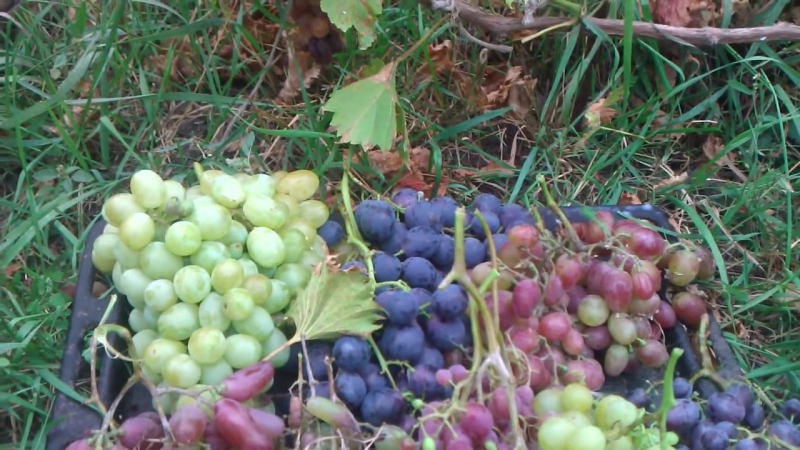
After the grapes are harvested, they begin to take care of the next year's harvest. Bushes leave to winter without green, non-lignified shoots.
Plants need:
- potassium;
- calcium;
- phosphorus;
- bore.
Potash fertilizers are quickly absorbed by bushes and strengthen the branches. Green shoots "mature", are covered with brown bark and easily tolerate winter cold. With a sufficient amount of potassium, large clusters form, the berries do not crack during heavy rains and after a drought. With a lack of an element, the leaves begin to die off.
Calcium is involved in metabolic processes, it is important for the development of the root system, pollen germination.
Phosphorus slowly accumulates in the vines, so the result of autumn feeding appears in early spring. Fertilizers help to form rich ovaries and large clusters with large berries.
Without boron, pollen is practically not formed, flowers are not fertilized, ovaries are not formed. The brushes become loose with few berries.
Additional properties of the substance:
- improves metabolism;
- makes leaves brighter: increases chlorophyll content;
- accelerates the synthesis of nitrogen and its compounds.
An overdose of boron has a negative effect on plants. Therefore, it is brought in in the amount indicated on the package, every 3 years.
Terms of making autumn dressings
With the correct fit a young bush of grapes has enough fertilizer reserves for 3-5 years, depending on the soil. On dense rocky soils, nutrients are retained longer, from sandy soils they are washed out faster.
The first autumn complex top dressing is carried out 4 years after planting the bush and is repeated every 3 years. The grapes are provided with potassium and phosphorus, mineral and organic fertilizers are applied immediately after harvest.
Top dressing by month

A good harvest takes a lot of energy from the bushes. During the season, 5 dressings are carried out:
- In Mayas soon as the warm days came. Under each plant, a bucket of water (10 l) with 10 g of ammonium nitrate, 20 g of superphosphate and 5 g of potassium salt dissolved in it is poured into the recesses along the perimeter of the hole. The mineral composition at this stage is replaced with chicken droppings.
- Late May - early June... 2 weeks before flowering, make the same composition as for the first time. It is better to use dry granules, scatter them along the edge of the hole: 40 g of nitrogen and potassium fertilizers, 50 g of superphosphate per 1 bush.
- In July, between flowering and ripening grapes, when the berries are pea-sized. Superphosphate and potassium agents are added. From organic matter, cow dung is suitable.
- In August, when the berries ripen. Under each bush, 50 g of potash and 100 g of phosphorus fertilizers are applied.
- In September... A potassium composition with phosphorus and boron is used.
It is advisable to cover the holes around the trunks with straw.
Important! Dates are indicated for the middle band. They depend on the climate of the region and the grape variety.
Root
Such dressings are most important for the development and fruiting of grapes, they are carried out strictly according to the schedule. Funds are introduced into the ground, burying at a distance of 50–80 cm from the trunk, and solutions of mineral and organic substances are added.
Foliar
With an abundant grape harvest, the bushes receive heavy loads, the roots cannot cope with obtaining nutrients from the soil and processing them. Therefore, additional foliar feeding is carried out.
The first fertilizers are sprayed in early spring, when the air warms up to + 10 ° C. Leaves and vines are sprayed until the ovaries appear 3-5 times with an interval of 7-10 days, then after harvest.
Reference! If necessary, such funds are used in summer, except for the flowering period.
Spraying is carried out in the evening under the following conditions:
- the leaves are dry, there is no dew and raindrops on them;
- the air temperature is less than + 23 ° C;
- the weather is dry, cloudy and calm.
If it is hot during the day, there is a risk that burns will form on the leaves and the plants will lose their ovaries.
After harvesting, an ash solution is sprayed onto the leaves. It is prepared in advance, let it brew for 2 weeks. Add 150 ml of the product to a bucket of water.
Mineral fertilizers are poured with warm water and stirred until completely dissolved. Then dilute according to the instructions and spray the grapes.
Insecticides and remedies for diseases are added to the nutrient solution, if necessary. Such bushes winter well and will develop rapidly in spring.
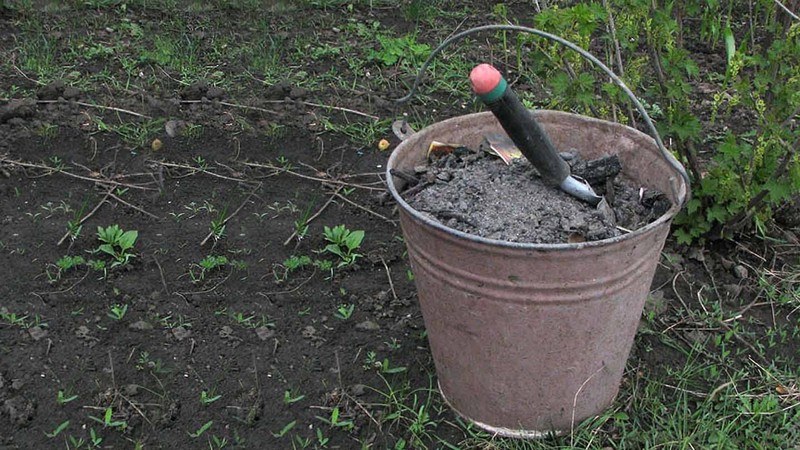
Fertilizers
All fertilizers are divided into organic and mineral.
Organic is of natural origin. These are composts from plants, wood ash, animal manure and bird droppings.
Mineral minerals are produced at chemical plants, they contain elements in their pure form:
- urea;
- potassium;
- phosphorus;
- ammonium nitrate.
Such funds are single and multicomponent (complex).
For the full development of bushes and obtaining large bunches with sweet berries, both types of fertilizing are used.
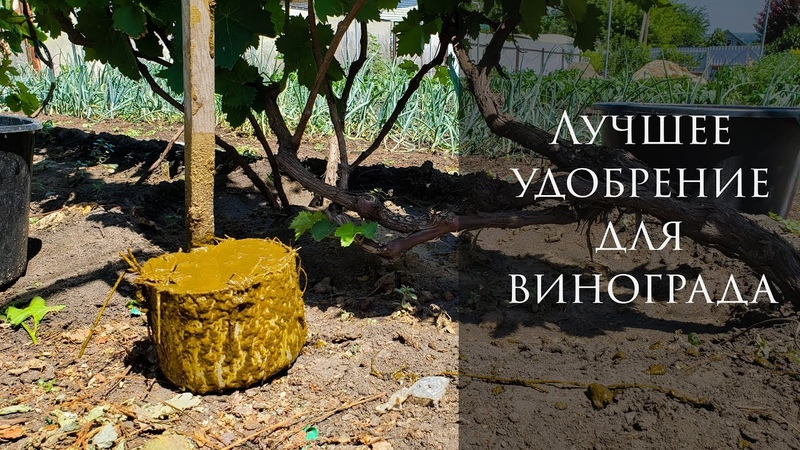
Autumn fertilizers for grapes
After harvesting, the growth of shoots stops. Grapes need potassium and phosphorus to grow stronger after fruiting and become frost-resistant.
Ready funds
For feeding grapes, formulations are made of several one-component fertilizers:
- potassium salt;
- granular superphosphate;
- potassium chloride;
- potassium magnesium;
- urea;
- potassium sulfate.
Potassium and phosphorus are applied at 50-100 g per 1 bush, the rest of the funds - 2-4 times less.
Complex multicomponent formulations contain elements in the right proportions.
Suitable for grapes:
- azophoska;
- Novofert;
- "Biopon";
- "Zdraven";
- Plantafol;
- "Clear sheet".
On the packaging of each of the compositions, the consumption rate is indicated, depending on the type of plant.
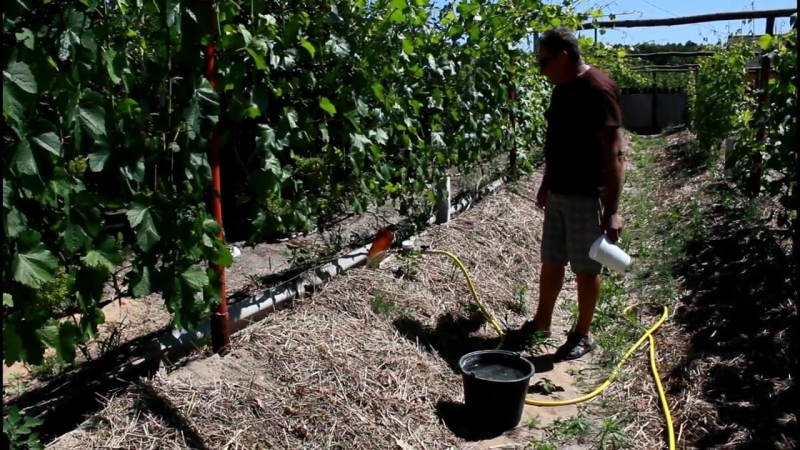
Folk recipes
Folk remedies are of organic origin.
For grapes use:
- wood ash;
- compost;
- peat;
- humus;
- eggshells;
- manure;
- litter.
After burning the vegetation in the field for several years, grapes and other crops are provided with basic substances. Then the soil is additionally fertilized.
Helpful! Previously, when cleaning up livestock sheds, manure was carried out and piled into pits, where it settled. In winter, ready-made fertilizers were scattered between the rows. As a result, in the spring, humus lay around the bushes, which, together with rainwater, penetrated deep into and nourished the roots of the grapes.
Ash is scattered on the ground or insisted on water. Peat is used pure, mixed with manure to improve the quality.
Poultry droppings, especially chicken droppings, release a lot of nitrogen when dissolved. Therefore, it is poured with water and allowed to ferment for 2 weeks.
Eggshell is a source of calcium. It is dried well, rubbed and poured under the bushes in the fall.
How to properly fertilize grapes in autumn
When applying dressings near the trunks, only superficial roots receive nutrients. As a result, green shoots, long vines and few ovaries are formed in spring.
Important! Roots that are close to the surface are less important to the bush than those that go deeper. If damaged, they quickly recover.
In order for nutrients to reach deep roots, fertilizers are scattered or poured at a distance of 50–80 cm from the trunk, depending on the age of the bush. The funds are placed in grooves or pits so that they do not dry out, dissolve and go deeper.
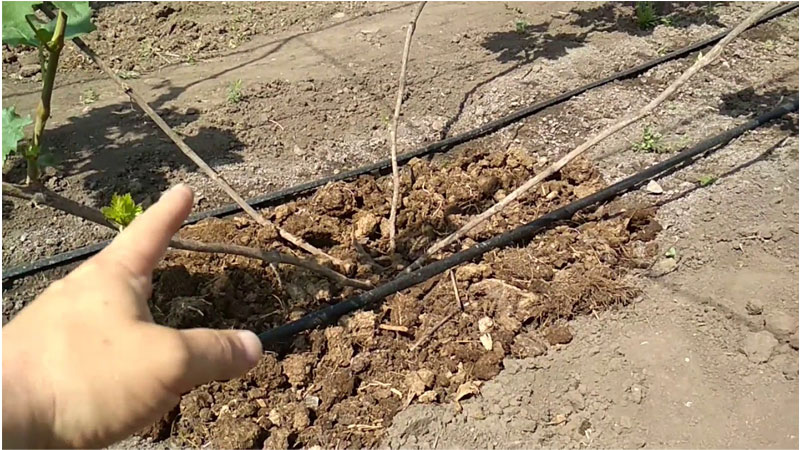
Step-by-step instruction
Autumn processing combines soil loosening, crop feeding and removal of all weeds:
- Dug up the ground around the bushes (radius - 50-60 cm).
- Grooves are made along the edges with a depth of 20 cm.
- Moisture irrigation is carried out using the existing holes.
- Mineral fertilizer is added to the grooves and everything is sprinkled with earth.
In this way, a "long-playing" fertilizer is placed, which is slowly absorbed, for example: potassium magnesium, phosphate rock, potassium sulfate. The roots of the grapes penetrate into the soil to a depth of 6 m, the granules gradually dissolve during rain and watering, and minerals sink down.
Having retreated 30 cm from the trunks, the surface of the holes is sprinkled with wood ash or cow dung. Horse, sheep dung, bird droppings are also suitable.
Important! Fresh manure is not applied - they use humus that has lain for more than a year in a place protected from sunlight.
Chicken manure is dissolved in water, kept until fermentation, then diluted with water in a ratio of 1: 4 and 3 buckets of solution are poured under the bush closer to the edge of the hole.
By analogy with organic fertilizers, agents that quickly dissolve in water are applied. When the moisture is completely absorbed, the holes are covered with leaves, chopped grass. From above, to the very trunk, mulch with straw. This method of autumn processing will provide the grapes with adequate nutrition and protect the roots from frost. Moisture remains under the straw for a long time.
Features of autumn feeding by region
Depending on the climate, active processes in grape bushes stop at different times.
Top dressing is applied 3-4 weeks before the onset of frost:
- in the Krasnodar Territory - in mid-October;
- in the Moscow region - in the second half of September;
- in the Urals - in the first half of September;
- in Siberia and the Far East - in August.
Table grape varieties withstand frost down to -20 ° C. In the southern regions, for plants to winter normally, it is enough trim bushes and mulch around the soil.
In the suburbs, covering grapes are protected from frost and icing. The gazebo is trimmed and left on the trellises.
In the Urals, the covering culture is removed from the trellises, the vines are laid on the ground. All types of plants survive the cold winters of Siberia only under straw or spruce branches.
It is interesting:
How to properly freeze grapes for the winter in the freezer and is it possible to do it.
Conclusion
Growing grapes requires constant attention. Fall dressing is an important step in increasing yields in the next season. It strengthens the vines, stimulates the formation of high-quality ovaries, protects the roots from freezing in winter and increases plant resistance to diseases and pests.